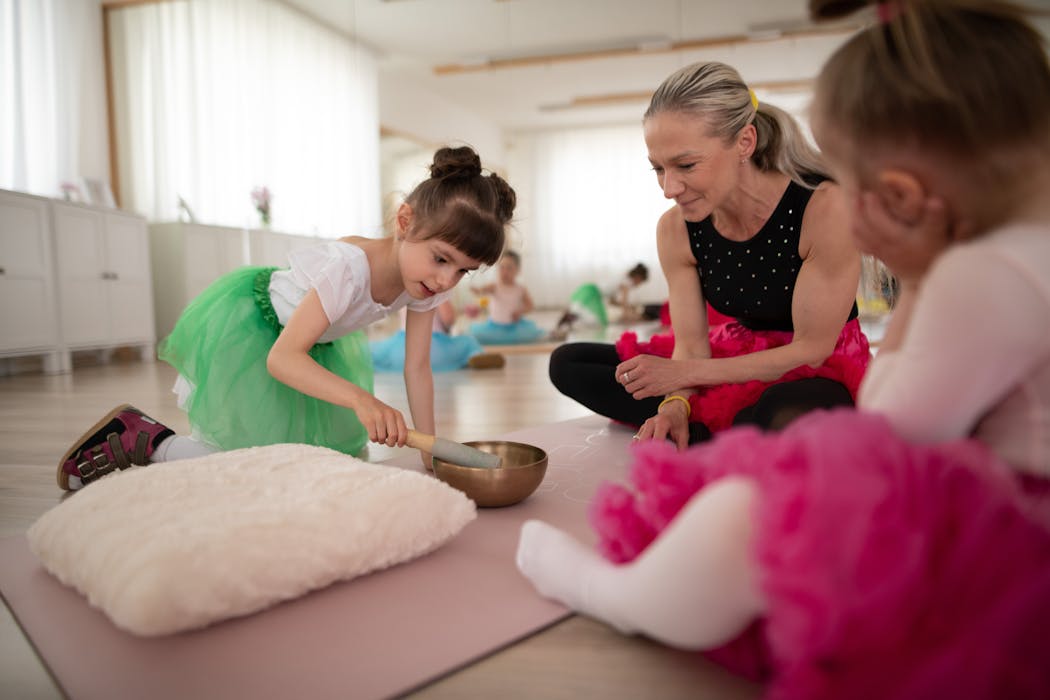Introduction
Movement frameworks are structured systems or methods of exercise that provide a framework for individuals to improve their fitness and overall health. These frameworks incorporate a variety of exercises and techniques to target different areas of the body and improve different aspects of fitness, such as strength, flexibility, and balance. Incorporating movement frameworks into your fitness routine can be highly beneficial, as they provide structure and guidance, reduce the risk of injury, and add variety and motivation to your workouts.
Benefits of Incorporating Movement Frameworks
One of the main benefits of incorporating movement frameworks into your fitness routine is improved overall fitness. These frameworks are designed to target different areas of the body and improve different aspects of fitness, such as strength, flexibility, and balance. By following a structured program, you can ensure that you are working all areas of your body and improving all aspects of fitness, leading to a well-rounded and balanced physique.
Another benefit of incorporating movement frameworks is a reduced risk of injury. These frameworks are designed by professionals who understand the mechanics of the body and how to safely and effectively perform exercises. By following a structured program, you can ensure that you are performing exercises correctly and using proper form, which can help prevent injuries. Additionally, many movement frameworks incorporate exercises that help improve stability and mobility, which can further reduce the risk of injury.
Incorporating movement frameworks into your fitness routine can also increase motivation and variety in your workouts. Following a structured program can help keep you accountable and motivated to stick to your fitness routine. Additionally, many movement frameworks incorporate a variety of exercises and techniques, which can help keep your workouts interesting and prevent boredom. This variety can also help prevent plateaus and keep your body challenged, leading to continued progress and results.
Understanding the Differences Between Popular Movement Frameworks
There are several popular movement frameworks that individuals can incorporate into their fitness routine, each with its own unique focus and benefits. Some of the most popular movement frameworks include CrossFit, Pilates, and yoga.
CrossFit is a high-intensity strength and conditioning program that combines elements of weightlifting, cardiovascular exercise, and bodyweight movements. CrossFit workouts are typically short and intense, and they are designed to improve overall fitness and performance. The workouts are constantly varied, meaning that they change every day, which helps prevent boredom and keeps the body challenged. CrossFit is suitable for individuals of all fitness levels, as the workouts can be scaled to meet the needs and abilities of each individual.
Pilates is a low-impact exercise method that focuses on building core strength, flexibility, and overall body awareness. Pilates exercises are performed on a mat or using specialized equipment, such as a reformer or a Cadillac. The exercises are designed to target the deep muscles of the core, as well as the muscles of the hips, glutes, and back. Pilates is known for its emphasis on proper alignment and breathing, and it can help improve posture, balance, and coordination. Pilates is suitable for individuals of all fitness levels, as the exercises can be modified to meet the needs and abilities of each individual.
Yoga is a mind-body practice that combines physical postures, breathing exercises, and meditation. Yoga poses, or asanas, are designed to improve strength, flexibility, and balance, as well as promote relaxation and stress reduction. Yoga is known for its focus on breath control and mindfulness, and it can help improve mental clarity and focus. There are many different styles of yoga, ranging from gentle and restorative to vigorous and challenging. Yoga is suitable for individuals of all fitness levels, as the poses can be modified to meet the needs and abilities of each individual.
CrossFit: A High-Intensity Strength and Conditioning Program for All Fitness Levels
CrossFit is a high-intensity strength and conditioning program that combines elements of weightlifting, cardiovascular exercise, and bodyweight movements. CrossFit workouts are typically short and intense, and they are designed to improve overall fitness and performance. The workouts are constantly varied, meaning that they change every day, which helps prevent boredom and keeps the body challenged.
One of the main benefits of CrossFit is improved overall fitness. The workouts are designed to target all areas of the body and improve all aspects of fitness, including strength, endurance, power, speed, agility, and flexibility. By following a structured CrossFit program, individuals can ensure that they are working all areas of their body and improving all aspects of fitness, leading to a well-rounded and balanced physique.
Another benefit of CrossFit is increased motivation and accountability. CrossFit workouts are typically performed in a group setting, which can provide a sense of community and support. This can help individuals stay motivated and accountable to their fitness goals. Additionally, the constantly varied nature of CrossFit workouts helps prevent boredom and keeps individuals engaged and motivated to continue their fitness journey.
Tips for getting started with CrossFit include finding a reputable CrossFit gym or box, working with a qualified coach or trainer, and starting with a beginner’s program. It is important to start slowly and gradually increase the intensity and volume of your workouts to prevent injury and allow your body to adapt. It is also important to listen to your body and rest when needed, as recovery is an important part of the CrossFit program.
Pilates: A Low-Impact Exercise Method for Building Core Strength and Flexibility
Pilates is a low-impact exercise method that focuses on building core strength, flexibility, and overall body awareness. Pilates exercises are performed on a mat or using specialized equipment, such as a reformer or a Cadillac. The exercises are designed to target the deep muscles of the core, as well as the muscles of the hips, glutes, and back.
One of the main benefits of Pilates is improved core strength. The exercises are designed to target the deep muscles of the core, such as the transverse abdominis and the pelvic floor muscles. By strengthening these muscles, individuals can improve their posture, stability, and overall body alignment. This can help prevent back pain and improve overall body function.
Another benefit of Pilates is increased flexibility. Many Pilates exercises focus on stretching and lengthening the muscles, which can help improve flexibility and range of motion. Improved flexibility can help prevent injuries and improve overall athletic performance. Additionally, Pilates exercises can help improve balance and coordination, as they require control and precision of movement.
Tips for getting started with Pilates include finding a reputable Pilates studio or instructor, starting with a beginner’s program, and focusing on proper alignment and breathing. It is important to start slowly and gradually increase the intensity and difficulty of your workouts to prevent injury and allow your body to adapt. It is also important to listen to your body and rest when needed, as recovery is an important part of the Pilates program.
Yoga: A Mind-Body Practice for Improving Strength, Flexibility, and Balance
Yoga is a mind-body practice that combines physical postures, breathing exercises, and meditation. Yoga poses, or asanas, are designed to improve strength, flexibility, and balance, as well as promote relaxation and stress reduction. There are many different styles of yoga, ranging from gentle and restorative to vigorous and challenging.
One of the main benefits of yoga is improved strength and flexibility. Many yoga poses require strength and stability, and by practicing yoga regularly, individuals can improve their overall strength and flexibility. This can help prevent injuries and improve overall athletic performance. Additionally, yoga poses can help improve balance and coordination, as they require control and precision of movement.
Another benefit of yoga is increased mental clarity and focus. The practice of yoga involves focusing on the breath and being present in the moment, which can help calm the mind and reduce stress. Regular yoga practice can help improve mental clarity and focus, as well as promote relaxation and a sense of well-being.
Tips for getting started with yoga include finding a reputable yoga studio or instructor, starting with a beginner’s class, and focusing on proper alignment and breathing. It is important to start slowly and gradually increase the intensity and difficulty of your yoga practice to prevent injury and allow your body to adapt. It is also important to listen to your body and rest when needed, as recovery is an important part of the yoga practice.
How to Determine Which Movement Framework is Right for You
When choosing a movement framework, there are several factors to consider. First, consider your fitness goals and what you hope to achieve through your exercise routine. If you are looking to improve overall fitness and performance, CrossFit may be a good fit for you. If you are looking to build core strength and flexibility, Pilates may be a good fit for you. If you are looking to improve strength, flexibility, and balance, as well as promote relaxation and stress reduction, yoga may be a good fit for you.
It is also important to consider your current fitness level and any limitations or injuries you may have. Some movement frameworks, such as CrossFit, can be intense and may not be suitable for individuals with certain health conditions or injuries. It is important to consult with a healthcare professional before starting any new exercise program, especially if you have any pre-existing health conditions or injuries.
To determine which movement framework is right for you, it can be helpful to try out different frameworks and see which one you enjoy and feel the most comfortable with. Many gyms and studios offer trial classes or introductory packages, which can be a great way to try out different frameworks and see which one resonates with you. It is important to listen to your body and choose a movement framework that feels good and aligns with your individual needs and goals.
Combining Movement Frameworks for a Comprehensive Fitness Regimen
While each movement framework has its own unique benefits, combining different frameworks can provide a comprehensive fitness regimen that targets all areas of the body and improves all aspects of fitness. For example, combining CrossFit, Pilates, and yoga can provide a well-rounded and balanced fitness routine that improves strength, flexibility, balance, and overall fitness.
To combine different movement frameworks, it can be helpful to create a schedule or plan that incorporates different types of workouts throughout the week. For example, you could do CrossFit workouts on Mondays, Wednesdays, and Fridays, Pilates workouts on Tuesdays and Thursdays, and yoga classes on Saturdays and Sundays. This way, you are targeting different areas of the body and improving different aspects of fitness each day.
By combining different movement frameworks, you can also prevent boredom and keep your workouts interesting and challenging. This variety can help prevent plateaus and keep your body challenged, leading to continued progress and results. Additionally, combining different frameworks can help prevent overuse injuries and promote overall body balance and function.
Common Misconceptions About Movement Frameworks and How to Overcome Them
There are several common misconceptions about movement frameworks, such as CrossFit, Pilates, and yoga. One common misconception is that CrossFit is only for elite athletes or individuals who are already in great shape. While CrossFit can be intense, it is suitable for individuals of all fitness levels, as the workouts can be scaled to meet the needs and abilities of each individual. It is important to start slowly and gradually increase the intensity and volume of your workouts to prevent injury and allow your body to adapt.
Another common misconception is that Pilates is only for women or individuals who are looking to improve their flexibility. While Pilates is popular among women and can help improve flexibility, it is suitable for individuals of all genders and fitness levels. Pilates is a low-impact exercise method that focuses on building core strength and overall body awareness, and it can benefit individuals of all fitness levels and goals.
Similarly, there is a common misconception that yoga is only for women or individuals who are looking to improve their flexibility. While yoga is popular among women and can help improve flexibility, it is suitable for individuals of all genders and fitness levels. Yoga is a mind-body practice that combines physical postures, breathing exercises, and meditation, and it can benefit individuals of all fitness levels and goals.
To overcome these misconceptions, it can be helpful to educate yourself about the different movement frameworks and their benefits. It can also be helpful to try out different frameworks and see which one resonates with you. By trying out different frameworks, you can experience the benefits firsthand and see how they can improve your fitness and overall well-being.
Conclusion: Embracing Movement Frameworks for a Healthier, Happier You
Incorporating movement frameworks into your fitness routine can be highly beneficial for improving overall fitness, reducing the risk of injury, and increasing motivation and variety in your workouts. By understanding the differences between popular movement frameworks, such as CrossFit, Pilates, and yoga, you can choose the one that aligns with your individual needs and goals.
Whether you choose to incorporate one movement framework or combine different frameworks, it is important to listen to your body and choose a program that feels good and aligns with your individual needs and goals. By embracing movement frameworks, you can improve your fitness, reduce the risk of injury, and create a healthier, happier you. So why not give it a try and see how movement frameworks can transform your fitness routine and improve your overall well-being?
Find out how Torongo Therapyplus can help you with your needs. Get in touch with us at smile@torongo.life, or call us on 02 8809 9965.































